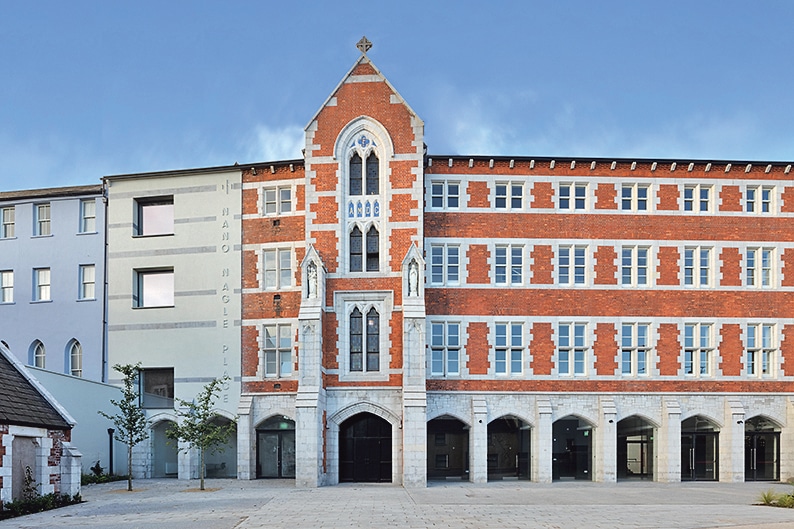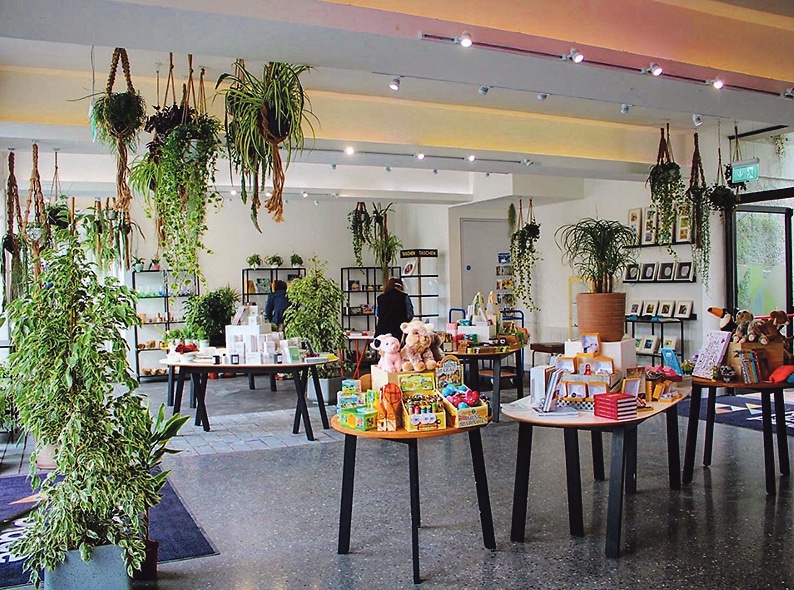Have you visited Nano Nagle Place yet? If you haven’t, you will be amazed at what lies hidden behind the Douglas Street façade and the high walls on Evergreen Road. For those of you who have visited before, it’s time to visit again, there is now even more to discover…

At the heart of Nano Nagle Place sits a cluster of carefully conserved Georgian convent buildings, along with Nano Nagle’s tomb and the sisters’ graveyard. Around these sits 3.5 acres of stunning gardens. Alongside the convent buildings is a beautiful Gothic Revival chapel and several school buildings, all of which house different facets of the work that goes on at Nano Nagle Place.
Nano Nagle Place is not simply a museum; it is a site of living heritage where the social justice work begun by Nano Nagle continues. In the 18th century, Nano defied the Penal Laws to open seven schools for poor Catholic children across Cork city. Nano saw education as the key to fighting deprivation and poverty. In the 21st century empowering education projects are still central to the mission of the Presentation Sisters and Nano Nagle Place.
The Lantern Community Project and Cork Migrant Centre (CMC) are based in two of the convent buildings. They work with those in danger of social exclusion and marginalisation. Visitors this summer will see a recent manifestation of this social justice work – an artwork created by CMC Migrant Teens Group and artist Kate O’Shea in response to the killing of George Floyd and the #BlackLivesMatter movement.
By visiting Nano Nagle Place you help to support this social justice work, along with helping to fund the care of this very special place. And there really is so much to discover: a museum, design and gift shops, a Cork-focussed book shop, Cork Printmakers Gallery, a map room, coffee in our secret garden…and of course the amazing Good Day Deli.
Due to Covid-19 social distancing requirements, there is now a time slotted entry system to the museum. An individual visitor or visiting household group now get a 15-minute period to progress through the self-guided, interactive museum before the next group enter. It is also now possible to book your museum tickets in advance via www.nanonagleplace.ie.
Hand sanitiser stations are available throughout the site, and there is a one-way system in the gardens to allow socially distanced access for all. Good Day Deli, the award-winning café nestled in the lush gardens, also have a booking system in place, see www.gooddaydeli.ie for details. They have spread tables onto the upper terrace of the garden, allowing for panoramic views across Cork City, as you dine.

The design and gift shop at Nano Nagle Place won ‘Visitor Store of the Year 2020’ in the annual Retail Excellence Awards. The recently expanded shop not only houses the best of Cork craft and international design, but also a range of plants chosen by Justine Looney of Cork Flower Studio. In the Cork-focused bookshop you’ll find titles covering many aspects of Cork history, along with women’s history, art and architectural history.
It’s all about Cork this summer…Cork in Print is an exhibition celebrating the contemporary urban and rural environments of Cork City and County through the medium of print in Nano Nagle Place Print Gallery. The exhibition features artworks by members of Cork Printmakers, and both framed and unframed works are for sale.
Nano Nagle Place is home to the Presentation Sisters Congregational Archives, a wonderfully rich resource for the history of the congregation and for the social history of Cork. This autumn, to mark Cork’s place at the centre of Decade of Centenary commemorations, Nano Nagle Place will host a free outdoor exhibition on the social history of the convent in 1920, and the children who were attending the schools at South and North Pres. The exhibition will explore the impact of the escalation of violence on the lives of the sisters and children, culminating in the burning of Cork in December 1920, which left 500 people homeless. This Nano Nagle Place exhibition is designed to complement those at St. Peter’s, The Crawford Gallery and Cork Public Museum, all of whom are presenting different perspectives in the political history of Cork City 100 years ago.

Plan your visit to Nano Nagle Place today. Visit www.nanonagleplace.ie for details.


